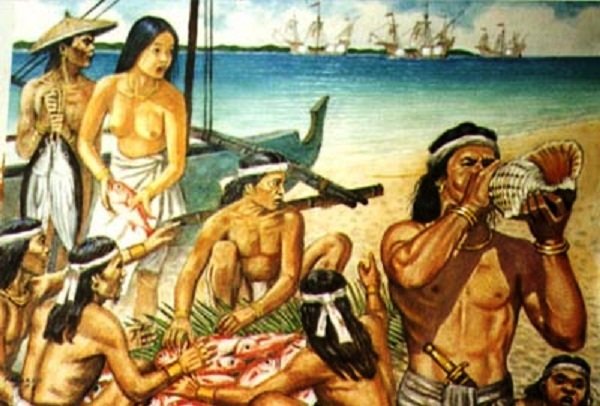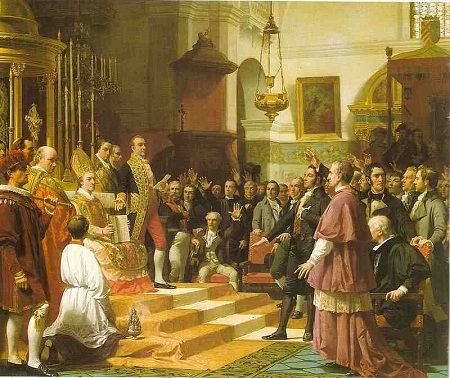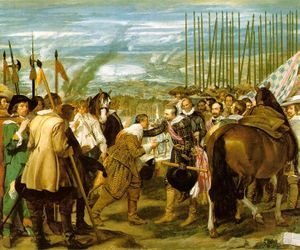Life & Culture of Filipino: Economy
Life & Culture of Filipino
Economy

Image Source
Before the arrival of the Spaniards, Philippine agriculture comprises of rice planting which is the primary needs of Filipinos since in the past until today. Assistance of the farmer is the carabao which helps a lot in preparing the rice field. The industry before is limited only to weaving and fishing.
The foreign commercial association of the Filipino is usually with Chinese traders which majority of them are already living in the country and brought with them their knowledge carpentry, agriculture, forging and more. That is why lots of Chinese dialects are use in Tagalog language. The word "buysit" is sometimes use in Tagalog which means messy, disastrous, spiteful.
The Chinese word "sinke" (new), "tampowa o tampo" (redundant) is also use in Bisaya on Leyte. The other Tagalog words for relatives like "kuya" (elder brother), "ditse" are also pure Chinese language. "Tighoy" (lamp), "pothaw" (axe) which has a corresponding meaning in Visaya as "bakal" (steel), is also Chinese word.
On the first few centuries of Spanish regime, the foregin association of the Philippines were controlled by the government and traded in Mexico, the port in Acapulco where Filipino products were dropped. There is this one manuscript that was written in Visayan language which consisted the Laws of Kalantiaw, and a calendar.

Image Source
The time of the said manuscript is dated back year 1433. The original manuscript were sent to Don Marcelino Orfila, a resident of Zaragosa, Spain. It was translated to Spanish by Don Rafael y Zamanev. While Fr. Jose Maria Pavon was a parish priest in the town of Himmaylan, Occidental Negros, he ordered to have it passage by its clerk Jean Antonio Collado on 1938 and 1939 and this passage were title "Las Antiguas Leyedas de la Isla de Begros."
The said copy were sent to the "Aklatan at Museo ng Filipinas" of Mr. Marco of Pontivedra, Negros Occidental. The mentioned calendar was published by the bibliographer Mr. Arigas together with the anniversary edition of El Renacimiento Filipino, July 1913 edition page 73.
According to the given explanation found in the manuscript, the months of the year were named in the calendar. The names started as follows "Dagagkahoy," "Daganinan," "Kilin," "Inubayan," "Kaway," "Kaoy-o," "Irarapon," "Mamanalulsol," Eirawhan," and "Katirugan," each month consist of 30 days and the last has only 26 days.
These information were proven by Loarca who had travelled the whole archipelago last 1576 and he has composition titled "Relacion de las Islas Filipinas." Don Miguel de Loarca were the one who had given the early names of the eight months and said that the other four months has no name because there was no agricultural job during those times.

Image Source
The basis of the statement that Mr. Loarca proven the manuscript is because his given name is near and the same. These were the names that Mr. Loarca had given" "Ulalen," "Dagagkahoy," "Daganenan," "Elquilin," "Inubayan," "Cavay," "Yrurapon," "Manalulusul."
About the weight ang measurement, early Filipinos has this "Talaro," a kind of weighing scale. I already mentioned "tahel," which half of this is called "tega," and use the "sinantan," which half is called "banal." For dried products, they have this "kaban" (bakid in Visaya) and "salop" in Tagalog (gantang in Visaya) which the last four terms were still use until now.
For measuring the length, "dipa" in tagalog (dupa in Visaya) were use in those times and even in the current times, which is equivalent to fathom in English. The dangkal in tagalog (span of fingers), which measurement start from the thumb to index finger. The "tumuro" in Tagalog, means a measurement from the thumb to the baby finger. These measurement were under the regulation of the Spanish government in the year 1727.

Image Source
Source:
Buhay at Kulturang Filipino
By: Norberto Romualdez